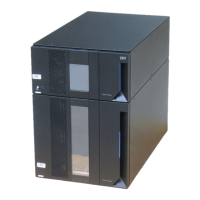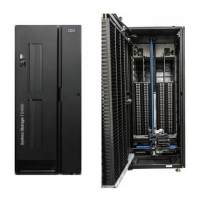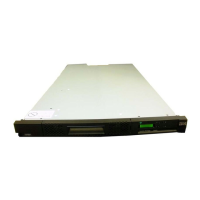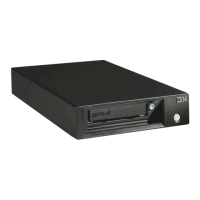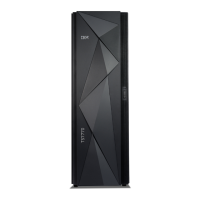When a cartridge is mounted in a shared drive, the library only accepts a demount
command that is requested by the source logical library. Any demount command
that is requested by another logical library is rejected.
Transparent addition or removal of storage capacity
With the Advanced Library Management System (ALMS) enabled in the TS3500
Tape Library, you can change the total logical library capacity (quantity of
accessible storage slots). The change is transparent to each host application because
the value in the Maximum Number of Cartridges field in the Tape Library Specialist
Web interface is not impacted by changes to the quantity of storage slots. The
additional storage slots are simply new candidates for cartridges to be moved to
upon insertion. To change the cartridge capacity of a logical library, refer to the
IBM System Storage TS3500 Tape Library with ALMS Operator Guide and see the
section about changing the maximum allowable quantity of cartridges in a logical
library.
Configuration of storage capacity without disruption
With the Advanced Library Management System (ALMS), no downtime is required
when you enable Intermediate Capacity On Demand or Full Capacity On Demand
for Models L22, L23, L52, and L53 or High Density Capacity on Demand for
Models S24 and S54 of the TS3500 Tape Library.
Virtual I/O slots
This topic describes the virtual input/output (I/O) slots feature and its benefits in
a library with the Advanced Library Management System (ALMS).
When ALMS is enabled in a TS3500 Tape Library, virtual I/O slots are enabled by
default so that the library automatically queues all cartridge moves between the
I/O station and the storage slots. This makes the process of adding and removing
cartridges easier and faster.
The TS3500 Tape Library has I/O stations with I/O slots that allow you to import
and export up to 224 cartridges at any given time. The I/O slots are also known as
import/export elements (IEEs). Virtual I/O slots increase the quantity of available
I/O slots by allowing storage slots to appear to the host as I/O slots. These storage
slots are also called virtual import/export elements (VIEEs). With virtual I/O slots,
the library automatically moves cartridges from the I/O stations to the storage
slots. In this way, the library enhances its import and export capabilities.
The goal of virtual I/O slots is to reduce the dependencies between the system
administrator and library operator so that each performs their import and export
tasks without needing the other to perform any actions:
v In a typical import scenario without virtual I/O slots, a library operator is
needed to stand at the physical library and fill the I/O station with cartridges; a
system administrator is needed to cause the applications to send commands for
moving cartridges out of the I/O station and into library storage slots. After the
operator fills the I/O station with cartridges, he must wait for the I/O station to
be cleared before he is able to insert additional cartridges, which means he is
waiting on the system administrator to clear the I/O station of each set of
inserted cartridges. If the library is enabled with virtual I/O slots, the operator
can continuously insert cartridges into the I/O station and the administrator
does not need to issue commands to move each new set of inserted cartridges.
Chapter 1. Introduction 47
|
|
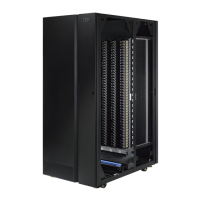
